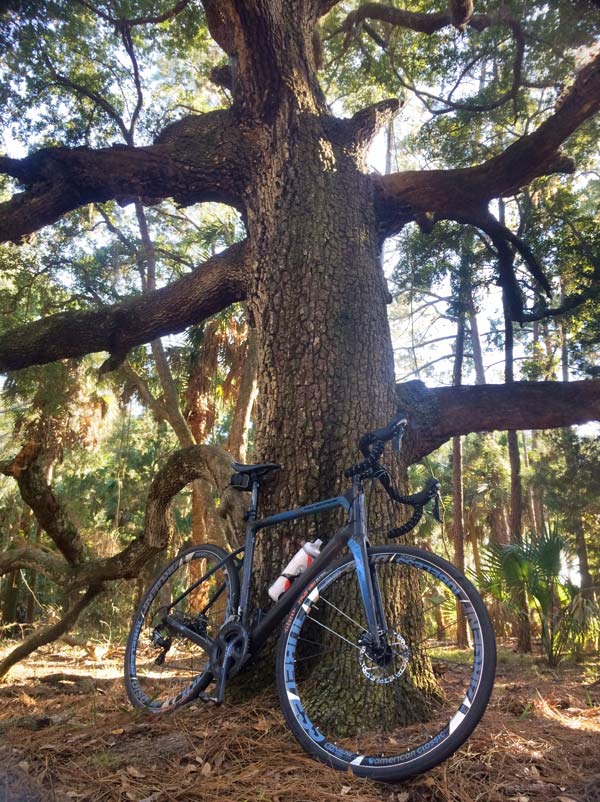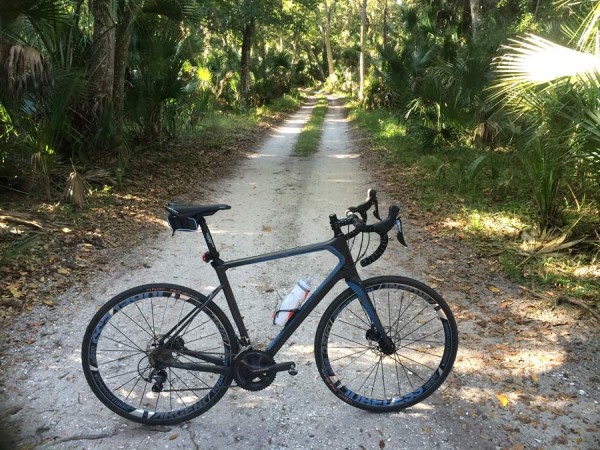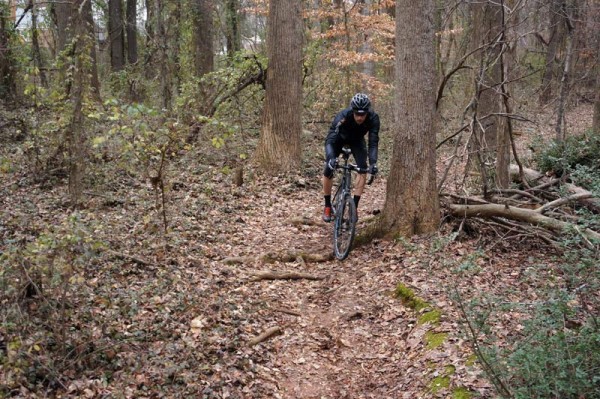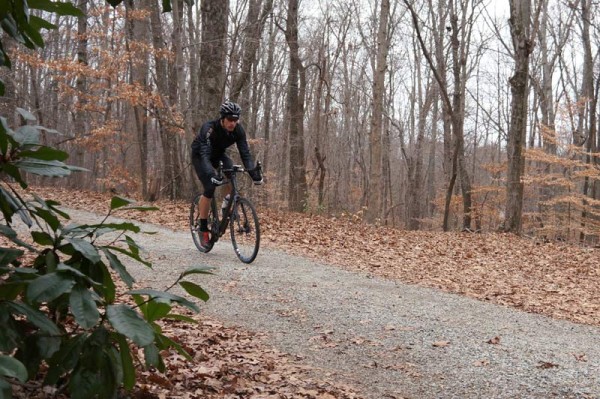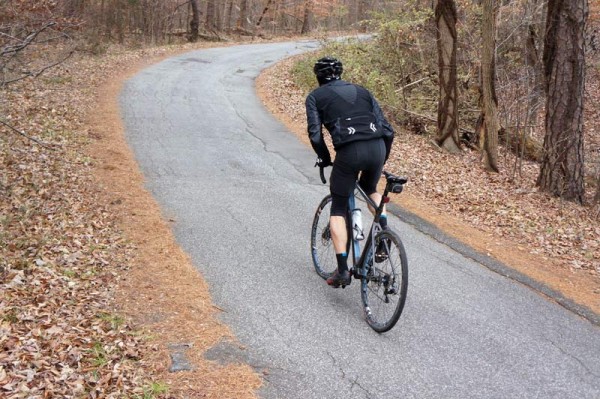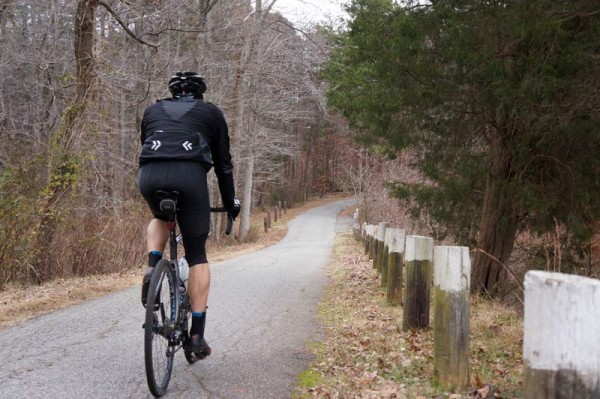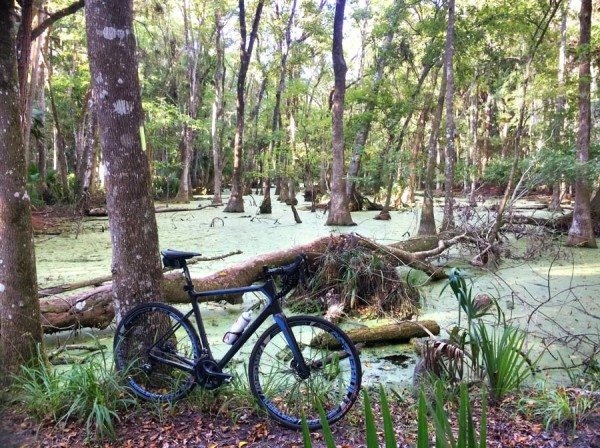The Jamis Renegade was developed with racing in mind, replacing Tyler Wren’s cyclocross bike as his rig of choice for the Crusher in the Tushars gravel road race. Fortunately for the rest of us, the engineers and product managers kept some non-race features that make it far more versatile than its trophy case may suggest.
After getting an up close look and weighing it at Interbike (check that post for frame details and photos), the size 58 demo bike was packed up and shipped in for a long term review. It still had a little Bootleg Canyon dust and scratches on it, but was in otherwise good shape. Our test bike was equipped with mechanical Shimano Ultregra drivetrain and hydraulic disc brakes with American Classic Argent Tubeless wheels and Clement Xplor USH 35c tires. The cockpit is Ritchey, with a carbon WCS Link flex seatpost and alloy Comp bar and stem. At just $4,199 for the complete bike with full carbon frame and fork, it’s a pretty good package on paper.
Here’s how it measured up on the road. And off of it. Waaaaay off of it….
The Renegade is built to have a low center of gravity and stable base, but sits tall and comfortable. The head tube is one of the largest stock sizes I’ve ever seen, coming in at 7.95″ (202mm) for the size 58 frame. The smaller bikes have much, much smaller head tubes, but with this one I was able to achieve my desired “aggressively upright” position without very many spacers. Honestly, I could have slammed the stem and still been very comfortable. The head angle runs from 70.5º on the 48 up to 72.5º on the 61. My 58 had a 72º HA, which felt spot on – steep enough for quick handling but slack enough to hold a line on loose terrain.
That’s contrasted with an almost 3″ BB drop and longish 16.9″ (430mm) chainstay. These measurements keep the bike sitting low and stable even with a 40c tire mounted. Jamis developed different geometries and layouts across the different frame sizes, too, to better tailor the ride to different rider heights.
One local trail I favor for “cross” training splits the difference between path and singletrack. It’s got plenty of roots and bumps, which showcased the Renegade’s ability to take a hit at speed and maneuver flowing corners. Even when sitting, the flattened, low-set seatstays diffuse the knocks before they get to you. The Ritchey seatpost adds a final bit of flex to the system to further minimize impact transmission and is a smart spec for a bike like this. It does use their Link saddle mount, which requires a Ritchey saddle, but there are a number of different options available aftermarket. The included Comp ZeroMax Vector EVO was a bit flat and wide for my tastes but still pretty comfortable.
Where the race heritage comes in is with the front triangle. It’s burly enough on its own, but the bottom bracket section is simply massive with a wide hexagonal downtube and deep, angular head tube section connecting it to the cockpit. The system doesn’t budge no matter what you’re layin’ down, and everything’s sent through the thick chainstays backward, creating a bridge between all points of contact that all but eliminates twist and flex on the bottom half of the frame.
So whether I was hammering along dirt and gravel…
…or mashing my way up a climb, nothing felt lost to the frame.
All that’s to say it’s fast when you want it to be fast. And the frame’s a brute, able to plow through washboards, gravel, roots and potholes without skipping a beat. But I found it was equally if not more enjoyable just riding along, taking whatever turn I fancied, for hours on end. The frame’s strength and stiffness gave me the confidence to take any turn, whether it was a road, a trail or something that might have been a trail once. More than once I was rewarded with views few others find:
There are a couple of spec points worth mentioning. The bike uses hidden front and rear fender/rack mounts, with thread-in eyelets to create the lower mounting points. Take them off when not using them for a cleaner look. Detail shots are in our Interbike coverage here. If I were keeping the bike, the one thing I’d change is to add tubeless tires. Clement’s are great, but to not take advantage of the traction, flat prevention and weight savings tubeless offers on a bike like this is silly.
There’s a reason why this bike made my 2014 Holiday Wish List. It’s what a good bike should be – something you can ride anywhere. Something that’s sturdy enough to get you there and back, regardless of where there is. I think that’s what separates the Jamis from some of the other carbon gravel bikes out currently, it’s just seems bigger and stronger. It lets its presence be known, by destroying the terrain, without being a bear to ride. As the adventure/gravel segment grows, this is one of the bikes to beat.
They also offer a Renegade Expert for $2,399. It’s still full carbon frame and fork, just with a lower level carbon and downgraded spec, but all the same features (including Di2 compatibility) are intact.
